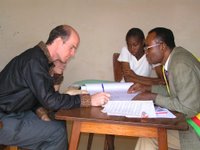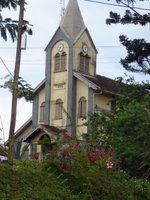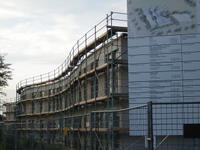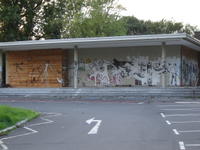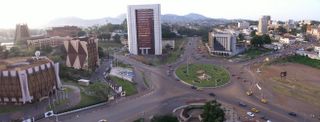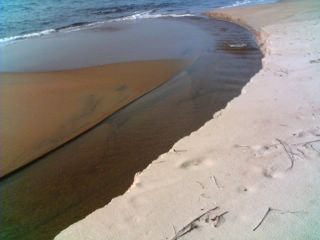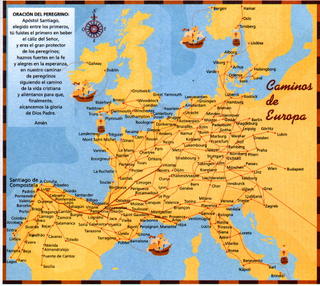
The expat life in
Cameroon also includes summers that are spent in distant, far away places.
This summer found me hopping around the East Coast of the
United States and
Western Europe.
Most of my travels belong to the non-edited version of this blog; I do want to share with you of my abbreviated (2 week) pilgrimage with my friend Matt through French and Spanish Basque country.

The trails we walked belonged, for the most part, to the Camino de Santiago de Compostela, or the Way of St. James, which is in essence a network of paths throughout western Europe that lead to the Medieval pilgrimage destination of Santiago (located in the NW corner of Spain). Most pilgrims take about a month to walk the most frequently traveled paths through Spain. Matt and I, with less than two weeks to spare, decided to stick to the routes that lead through the Pyrenees.
 El Camino has become popular in recent years and an impressive infrastructure has sprung up to support the throngs of pilgrims that pass through every day. Trails are well marked and often reinforced with gravel. Refugios, places for pilgrims to spend the night, are hosted by local parishes or religious orders that provide large dormitory style rooms to accommodate the large number of pilgrims during the summer months. Walking long distances is an inherently solitary activity, but long days were always punctuated with the good fellowship of others following the same path.
El Camino has become popular in recent years and an impressive infrastructure has sprung up to support the throngs of pilgrims that pass through every day. Trails are well marked and often reinforced with gravel. Refugios, places for pilgrims to spend the night, are hosted by local parishes or religious orders that provide large dormitory style rooms to accommodate the large number of pilgrims during the summer months. Walking long distances is an inherently solitary activity, but long days were always punctuated with the good fellowship of others following the same path.
The life of a pilgrim consists of routines. Dawn, around 6 a.m., brings the  break of camp. Everyone in the dorm dresses and repacks quickly and silently to be on their way by around 6:30. The bulk of the day is spent walking. On “low impact” days we would arrive at our destination at or before noon and would get to relax, wash clothes and read or play chess through the hot afternoon hours. More often, however, we became stuck hiking through the blazing midday heat, arriving at our refugio beaten and crispy with just enough time for a shower and a quick nap before heading out to dinner. These evening meals usually consisted of satisfying three course “pilgrims menus” offered at a local restaurant at pilgrim prices. Lights out at the refugio was usually 10-11 pm, but most of us were asleep before that, resting up for a repeat performance the next day.
break of camp. Everyone in the dorm dresses and repacks quickly and silently to be on their way by around 6:30. The bulk of the day is spent walking. On “low impact” days we would arrive at our destination at or before noon and would get to relax, wash clothes and read or play chess through the hot afternoon hours. More often, however, we became stuck hiking through the blazing midday heat, arriving at our refugio beaten and crispy with just enough time for a shower and a quick nap before heading out to dinner. These evening meals usually consisted of satisfying three course “pilgrims menus” offered at a local restaurant at pilgrim prices. Lights out at the refugio was usually 10-11 pm, but most of us were asleep before that, resting up for a repeat performance the next day.
As I mentioned earlier, Matt and I walked an abbreviated pilgrimage. I found myself wishing I had more time to complete the pilgrimage properly instead of simply walking parts of it. Nevertheless, even in the short time we had, many pilgrim lessons were learned. The Top 10 Lesson are listed below. If some of them sound familiar, it is because others have gone before us.
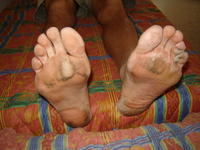
- Stick to the path
- Talk to strangers
- Walk through the pain
- Pain is Joy

- Look for the small signs that mark the Way
- If you don’t see any signs, you’re not looking hard enough
-
If you ignore the signs, you’ll get lost

- Take time to look back and enjoy the view
- Take lots of pictures – a few of them are bound to turn out well
And finally, drumroll.......
10. The journey is the destination
And here are some other impressions from the road.....
An example of the exquisite agro-industrial landscape around Pamplona
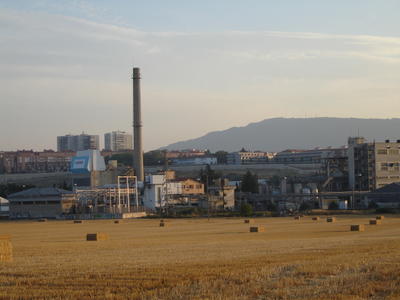
The omnipresence of windpower dominated the skyline through much of the Spanish foothills.
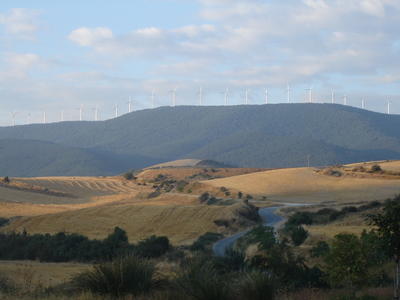
Sun shining through clouds.

At the very end of our travels we spent two days in a small beach town on Cotê
Basque.

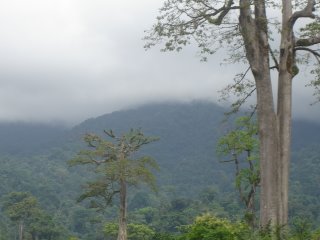
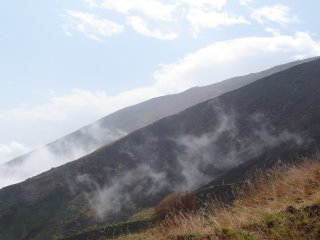

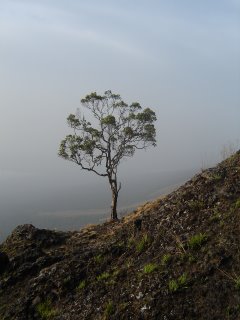 The Magic Tree
The Magic Tree
